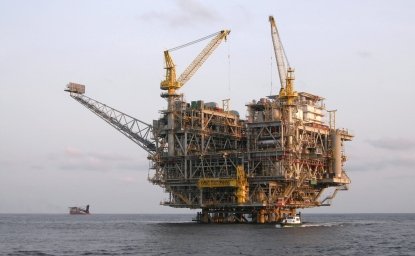171. Solving The Gabcikovo-Nagymaros Dam Conflict

In 1977 Czechoslovakia and Hungary agreed to build a barrage complex on the Danube River with large dams at Gabcikovo (Czechoslovakia) and Nagymaros (Hungary). According to the treaty, the jointly-owned and -operated system would "strengthen the fraternal relations of the two states and significantly contribute to the bringing about of the[ir] socialist integration." In reality, however, it sparked a controversy between these two neighbors that has plagued Hungarian-Slovak relations for more than two decades.
Initially there was little debate in either country on the building of the Gabcikovo-Nagymaros dams, but public opposition began in Hungary in the early 1980s on both economic and environmental grounds. In 1988 large protests against the dams were organized across Hungary, and by 1989 some 150,000 people had signed a petition opposing the project. Finally in May 1989, Hungarian Prime Minister Miklós Németh suspended work on Nagymaros, calling it "a symbol of an outdated economic model and a dysfunctional decision-making process."
Although there was some nascent, independent environmental activity in Czechoslovakia regarding Gabcikovo, it did not approach the level of protest in Hungary. This reflects the greater need for cheap energy in Czechoslovakia and the relatively smaller environmental impact. It meant, however, that by the time of the Velvet Revolution in November 1989, Gabcikovo was nearly finished while Nagymaros had barely begun.
Bilateral negotiations between Hungary and Czechoslovakia on the fate of the dams began in early 1990. Negotiations foundered because the Hungarians would only discuss how Gabcikovo was going to be dismantled while Slovakia would only discuss how Nagymaros would be built. Gabcikovo also became intertwined in the growing tension between the Czech Republic and Slovakia. Slovak Prime Minister Vladimir Meciar, believing the dams were vital to the future of the country, became one of its most vocal supporters and feared the federal government would compromise with Hungary.
Because of the continuing controversy, the Slovak government (within the Czechoslovak state) prepared a number of alternatives. In January 1991, the Slovak parliament voted to begin work on Alternate C. This plan would allow for the Gabcikovo Hydropower plant to operate, albeit at much lower levels than originally envisioned. The Slovaks called Alternate C a "temporary solution" because it was designed to leave open the possibility that the Nagymaros Dam eventually would be completed.
Hungary unilaterally terminated the agreement in May 1992. Work on Alternate C continued, and on October 12, Slovakia announced shipping on the Danube would be suspended for several weeks in order to divert the river. Hungary, in turn, claimed that this was a violation of the 1947 treaty setting the river as part of the international border between the countries. The diversion of the Danube set off a flurry of international activities, including several crisis meetings between Czechoslovakia, Hungary, and the European Union (EU). While negotiations were going on, the Slovak foreign minister reportedly told the federal government, "Decide whatever you want, Slovakia will in any case dam up the Danube." The Czechs, however, did not need to decide anything; when Slovakia became independent at the beginning of 1993, the Czechs extricated themselves from the dam controversy. Under intense pressure from the EU, in April 1993 Hungary and Slovakia agreed to submit the dispute to the International Court of Justice (ICJ).
By this point, the symbolism of the dams had been firmly set in each country. To Slovakia, the dams represented an important achievement of the Slovak nation in the modern world. The Hungarians linked the dams to the failure of communism and wore their opposition as a badge of solidarity with the environmental concerns of Western Europe. Yet neither of these positions made convincing legal arguments in tune with European norms. In the ICJ case, Slovakia argued from the perspective of the sanctity of international contracts, while the Hungarians relied on an expanded understanding of ecological necessity.
The ICJ faced three questions: 1) was Hungary entitled to abandon work on the dams in 1989; 2) was Czechoslovakia entitled to proceed with Alternate C in 1991 and put this system into operation in October 1992; and 3) what were the legal effects of Hungary's termination of the agreement in May 1992? In its Fall 1997 ruling, the Court took as its starting point the characterization of the project in the 1977 agreement as "single and indivisible." Furthermore, since there were no provisions in the treaty for one side to terminate, it was still in force. Therefore, Hungary had no right to act as it did. On the other hand, Slovakia still could not put Gabcikovo into operation.
Hungarian Prime Minister Gyula Horn, who had long supported the dams, decided this gave him the political cover to agree with the Slovaks to build a dam, although the ICJ clearly stated that there was no longer any reason to build Nagymaros. The Hungarian-Slovak agreement was concluded several weeks before the Hungarian elections, and opposition to the agreement in Hungary was overwhelming. Horn tried to back away from it, but it was too late and his party (the Hungarian Socialist Party) lost the election.
Several important questions were not settled by the ICJ. It did not provide, for example, definitive answers on how the river's water should be divided. Although the ICJ also suggested that each side wipe out the compensation claims against the other, and that Hungary pay half of the total construction costs already incurred in order to settle accounts, it ordered neither solution. Finally, it left open Hungary's rights regarding the management of Gabcikovo.
Given the intense opposition of the current Hungarian government to building a dam at Nagymaros (or any where else on the Danube) and the fact that Gabcikovo will not be dismantled, the current status quo seems to be the end point of the conflict. With a new government in Slovakia, it seems likely there will be an agreement that recognizes the situation and focuses on settling accounts.
Stephen Deets spoke at an EES Noon Discussion on December 2, 1998.
Author

Global Europe Program
The Global Europe Program is focused on Europe’s capabilities, and how it engages on critical global issues. We investigate European approaches to critical global issues. We examine Europe’s relations with Russia and Eurasia, China and the Indo-Pacific, the Middle East and Africa. Our initiatives include “Ukraine in Europe”—an examination of what it will take to make Ukraine’s European future a reality. But we also examine the role of NATO, the European Union and the OSCE, Europe’s energy security, transatlantic trade disputes, and challenges to democracy. The Global Europe Program’s staff, scholars-in-residence, and Global Fellows participate in seminars, policy study groups, and international conferences to provide analytical recommendations to policy makers and the media. Read more

Explore More
Browse Insights & Analysis
La esencia de la infraestructura global: perspectivas del líder de la industria Matt Harris

Debunking the Patient Capital Myth: The Reality of China’s Resource-Backed Lending Practices

